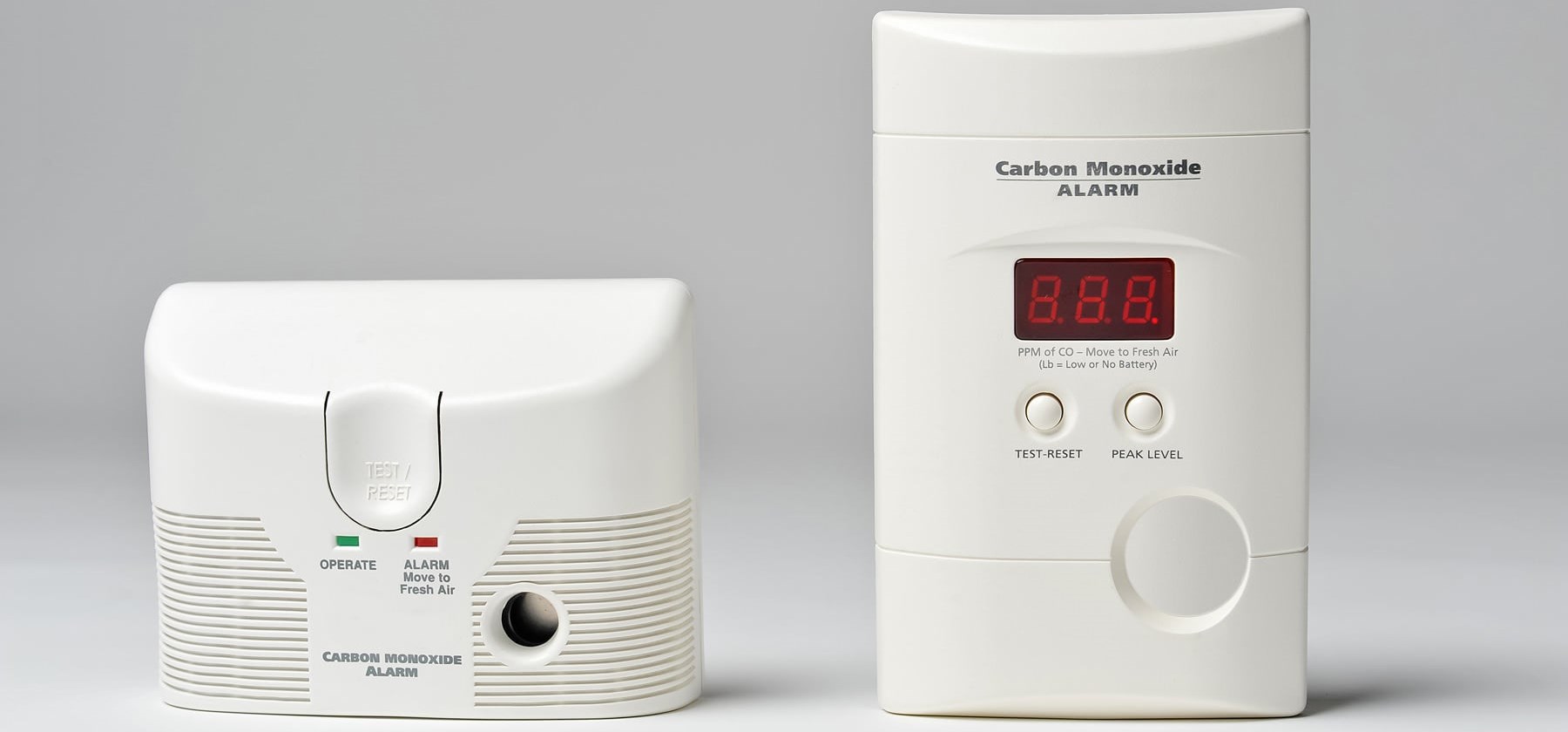Carbon Monoxide
If you own a fuel-burning appliance, you need to install carbon monoxide alarms adjacent to all sleeping areas in your home. Furnaces, water heaters, clothes dryers, space heaters, ovens, fireplaces, charcoal grills, and vehicles all produce lethal carbon monoxide.

Carbon monoxide (CO) is called the "silent killer" because you can't see, smell, or taste it. Hundreds of people are killed every year by carbon monoxide poisoning. Many of these deaths could have been prevented by installing a CO alarm.
Carbon monoxide is made by burning wood, coal, charcoal, natural gas, gasoline and other common fuels. Your electrical equipment does not produce carbon monoxide.
Carbon monoxide poisoning
Carbon monoxide enters your body, undetected, through breathing. Poisoning can be confused with the flu, food poisoning, or other illnesses. You can be poisoned by a small amount of CO over a long period of time or a large amount of CO over a short period of time.
Symptoms may include:
- headaches
- nausea
- dizziness
- shortness of breath
High levels of carbon monoxide can cause death within minutes. If your alarm goes off and you experience the symptoms above, call 9-1-1. Leave the building and do not re-enter your home until it is safe to do so.
How to avoid danger
Follow these simple tips to protect yourself from the dangers of carbon monoxide.
- Make sure your fuel-burning appliances are ventilated.
- Have your appliances serviced once per year by a qualified technician.
- Check for furnace venting issues or a cracked heat exchanger.
- Do not allow vehicle exhaust fume to enter your home.
- Clean and check your chimney once per year to make sure there is adequate ventilation.
- Avoid using a charcoal grill inside your home, tent, camper vehicle, or unventilated garage.
Carbon monoxide alarms vs smoke alarms
Carbon monoxide alarms are not a replacement for smoke alarms. You should know the difference between the sound of a smoke alarm and a carbon monoxide alarm. Consult your instruction manual to find characteristics of the sounds for each device.



 Subscribe to this page
Subscribe to this page